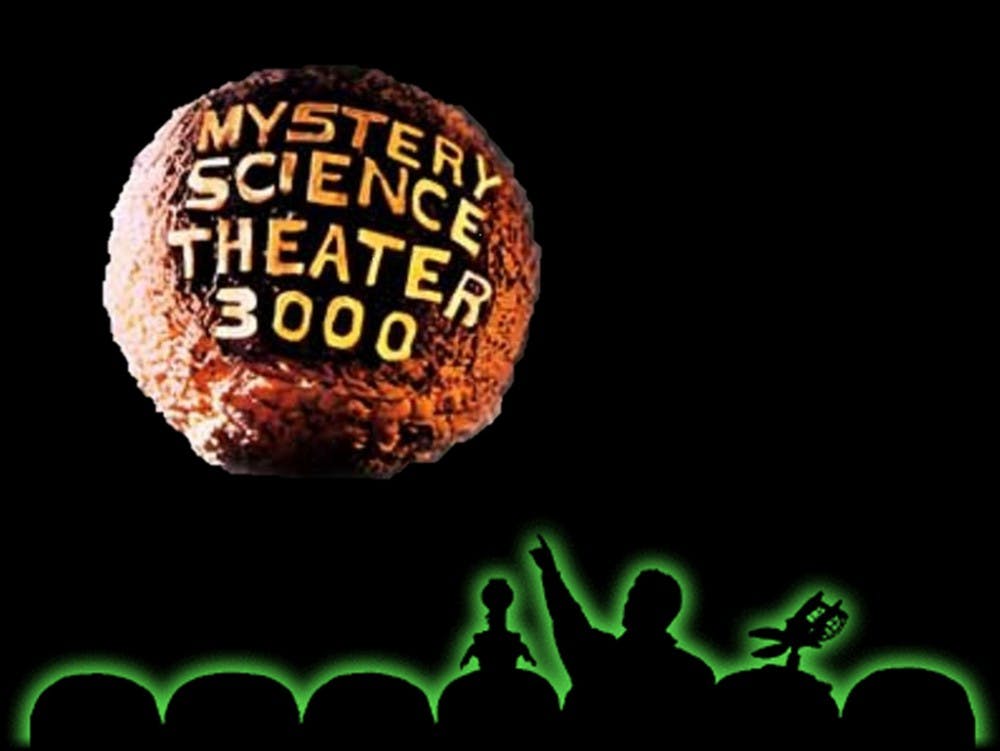After years of whispers, rumors and a hefty Kickstarter fund, “Mystery Science Theater 3000: The Return” dropped onto the screens of Netflix subscribers everywhere April 14. The original series from which it was born, “Mystery Science Theater 3000,” became a cult classic in the 1990s with its simple premise: Put three people in a theater with an awful movie, and watch them make fun of it. (To give an idea of the show’s ironic universe, these three people—one human and two robots, specifically—just happen to be aboard a spaceship controlled by mad scientists who use dreadful B-movies as a form of torture.)
The revival of “Mystery Science Theater” is just the latest in a string of cult classics whose time on air was cut short, only to be reincarnated in recent years by a paid streaming service. As Netflix, Hulu and their ilk have experienced greater and greater returns, they’ve taken the opportunity to develop programming independent of networks—at this point, original series like “Westworld,” “Stranger Things” and “The Handmaid’s Tale” are no longer the exception but the rule.
Along with the boom in new original series has come an interest in resurrecting old ones. Beginning with the long-rumored fourth season of “Arrested Development” in 2013—a revival which, oddly, has birthed its own cult following of apologists after initial mixed reviews (have you watched it backwards?)—Netflix has repeatedly reached into its (very deep) coffers to give new life to shows like “Trailer Park Boys,” “Gilmore Girls” and “Full House.” Meanwhile, Fox has a new “The X-Files” out and another “Prison Break” coming, while the release of Showtime’s “Twin Peaks” is less than a month away.
These reboots are, on their surface, a golden opportunity in what has been called the golden age of TV. In past years, the limits of network budgets and contracts have forced otherwise quality series to go under before they were allowed to fully develop, frustrating legions of fans in the process. What better way to remedy the fates of “Mystery Science Theater” and “Twin Peaks” than to give them a second chance, when the industry has the means to do so?
But as a viewer of these series in 2017, the constant renewal can feel like nostalgic overload, even if—or perhaps because—the results are everything an original fan could ask for.
Every last detail in the new “Mystery Science Theater” remains faithful to the series’ original run. The DIY, lo-fi set has been preserved, as well as the lovably awkward dialogue between the dwellers of the Satellite of Love and their captors. The chintzy theme song is back, albeit with a new origin story for the new host Jonah Heston (played by comedian Jonah Ray of “The Nerdist Podcast”).
The original humor, too, a rapid-fire stream of quips and references that manages to be clever without being crass, is in full force. One of the few flaws of the original “Mystery Science Theater” was that it was difficult, over the course of an hour and a half, to keep the audience’s attention with fresh riffs on an otherwise unbearable B-movie. Jonah and his robot friends have no such problem in “The Return”—if anything, they only gain steam after a somewhat slow start in the first episode, “Reptilicus.”
“Mystery Science Theater 3000: The Return” seems designed to hit all the pleasure points of diehard fans. It’s a distillation of everything that made the original run great: Creator Joel Hodgson, who also helms the new series, consciously modeled the new episodes after the old series’ greatest hits. And certainly, what the revival of “Mystery Science Theater” delivers is 14 deeply enjoyable additions to a format that has lain fallow for nearly twenty years.
What “Mystery Science Theater” fails to deliver is anything particularly new or ambitious. Like so many revivals in both television and film (looking at you, “Beauty and the Beast”) the new iteration opts to stay the course where it could chart a new path, resting on tropes beloved by old fans where it could dare to draw in new ones.
The do-it-yourself aesthetic of the set, for example, so integral to the original run, is somewhat undercut by the pristine camera quality of Netflix’s studios. Hodgson reportedly fought for this design choice against the wishes of some others in the new production crew, and one wonders if they were in the right. The cheap, handcrafted approach, for a low-budget production, was a functional one—so were the commercial break interludes, which the Netflix series likewise preserves. In the show’s new streaming form, uninhibited by finances and commercials, do these aesthetic decisions serve any purpose beyond mere nostalgia?
By all appearances, “Mystery Science Theater: The Return” hits the mark better than most recent reboots. Making fun of terrible movies, after all, is a timeless pleasure. But as streaming services and film production companies continue to cash in on old favorites, it is up to them whether they will simply rehash the quirks of the original or take a risk and try something new.
Get The Chronicle straight to your inbox
Signup for our weekly newsletter. Cancel at any time.

